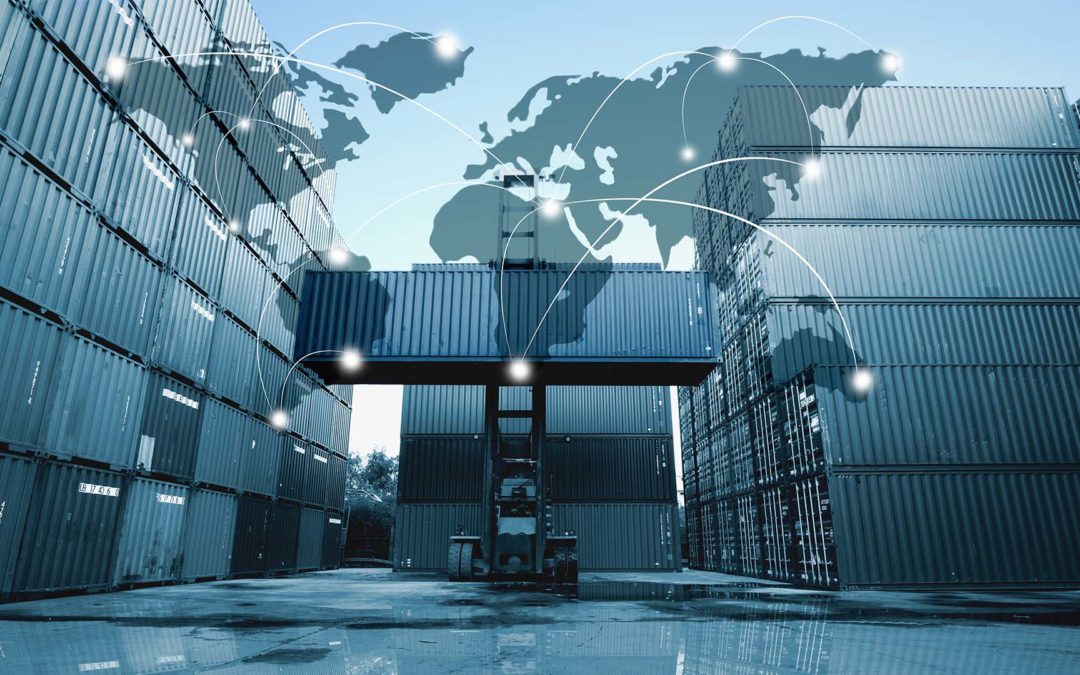A look at some of the key reshoring and onshoring trends taking place right now.
Whether they’re bringing manufacturing operations back to the US (i.e., “reshoring” or “onshoring”), sourcing raw materials from domestic suppliers or transferring business operations to a nearby country (“nearshoring”), companies are taking these measures to shore up their supply chains during this disruptive period.
The reasons for these moves are clear, but they’re not always practical or economical for manufacturers that have long used offshoring for both production and sourcing. “For decades on end, US firms have been shifting their production facilities abroad in pursuit of cheaper materials and labor,” Sabrina Kessler reports in Why US companies are reshoring their business.
“Globalization has pushed down costs and widened profit margins considerably for many enterprises,” she writes, “with supply chains becoming the target of fierce competition as firms seek greater efficiency.”
The global pandemic turned these business models on end, forcing companies to rethink where they get their raw materials and finished goods from. Add a container shortage, port congestion and labor shortage to the equation, and the push to bring at least some of those operations back onshore is now in full force.
“The fast upswing of the US economy, in general, is causing problems for many domestic firms [that] complain about a severe shortage of raw materials and suppliers,” Kessler points out. “Intermediate products are not available, and microchips are extremely hard to get. The coronavirus crisis shows that the optimization drive of corporate executives has its flaws.”
Some of the higher-profile reshoring moves have been highly publicized. In March 2020, Intel said it would invest $20 billion into two new Arizona semiconductor plants, while General Motors announced that it would reshore battery production to a new hub in Michigan, according to Kessler. Rather than build a planned factory abroad, US Steel decided to put it in Alabama or Arkansas. Other companies discussing similar moves include Lockheed, General Electric and Thermo Fisher.
The numbers are already adding up. According to Times News Network, the reshoring of jobs to the US from overseas is expected to reach more than 200,000 in 2022, higher than the previous peak of 180,000 jobs in 2017, Harry Moser, president of the Reshoring Initiative, says.
“The pandemic and the supply chain disruptions that resulted,” Moser told the publication, “have made companies more aware that being dependent on something that’s coming from halfway around the world, has to get through two ports across the ocean and is coming from a potential adversary, China in this case, that there’s more risk than they thought there was.”
Bringing it Back
Some industries are more apt to reshore and onshore than others. For example, Plastics Today says US plastics production facilities are “chomping at the bit” to take on more reshored projects in 2022. “The phone is ringing with customers wanting to source USA parts because of the headaches with long lead times and increased shipping costs from China,” one manufacturer told the publication. “We have two major OEMs reshoring parts and have found their costs to be lower.”
Products coming back to the US range from medical devices to consumer products and some toys. “Many customers worry about resin certifications, following documented procedures, and trademark infringements,” another leader in the plastics industry said. “Raw material lead times and availability have also contributed to reshoring. Companies are feeling the pressure of the global economic disruptions and are evaluating the benefits of domestic manufacturing.”
A similar trend is taking place in other industrial manufacturing sectors, where companies like Acme Alliance are working harder to keep their operations and jobs closer to their customers, The Washington Times reports. A maker of custom finished aluminum die-cast components for autos, heavy trucks and agricultural machinery, the company estimates that 20% of its domestic sales over the past five years have brought back jobs to the US.
“We keep telling our customers that the best strategy is to source locally,” the company’s president told the publication. “You reduce your level of inventory, your quality is better, you save a lot of costs with traveling. So finally, after this whole problem with COVID and now these logistics issues that we’ve been seeing all over the world, they realize that it makes a lot of sense.”
Faced with an increasingly vulnerable global supply chain, manufacturers are building greater logistical resilience both through reshoring and nearshoring their operations, according to FreightWaves. It says reshoring of manufacturing operations back to the U.S. could inject as much as $443 billion into the economy over the next several years, according to Thomas’ 2021 State of North American Manufacturing Report, which said 83% of manufacturers surveyed indicated they were “likely” to “extremely likely” to reshore, up from 54% in the 2020 survey.
.jpg)
Whether they’re working with business partners located overseas or right in their own backyards, IntelliTrans’ Global Control Tower provides high levels of supply chain transparency; aggregates, completes, and enhances data from a variety of sources; offers visibility into and execution of different aspects of the supply chain; and generates data-driven alerts and analytics that ask deeper questions and deliver meaningful insights.
By leveraging tracking information, the Global Control Tower provides analytics that measures key performance indicators (KPIs) like fleet cycle time, origin/destination dwell time, lane and hauler performance, back orders, freight spend, load optimization, and more. With their rate, equipment, lease, tracking, and invoice data in a central repository that’s accessible 24/7, companies can position themselves for success in any market conditions.

